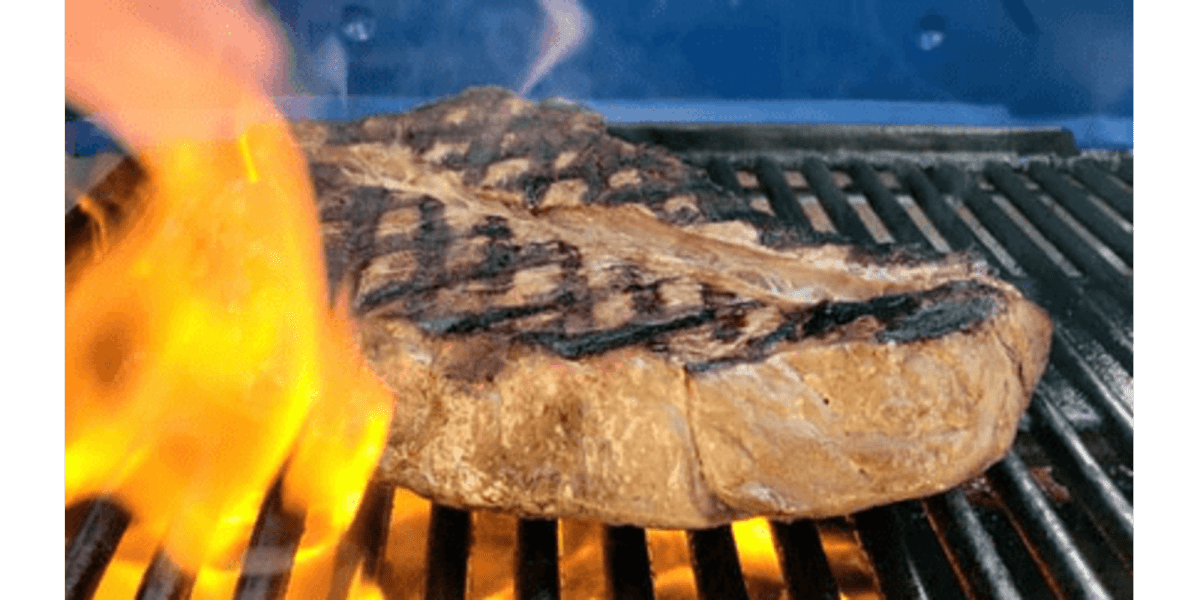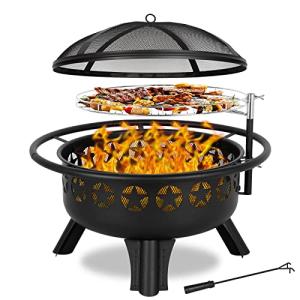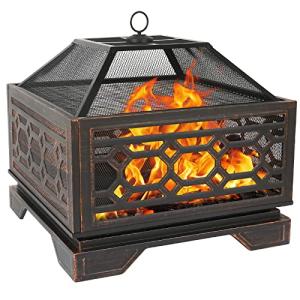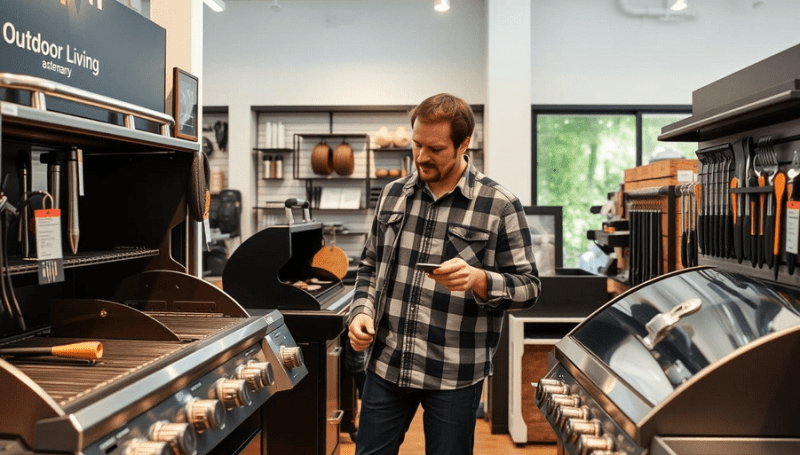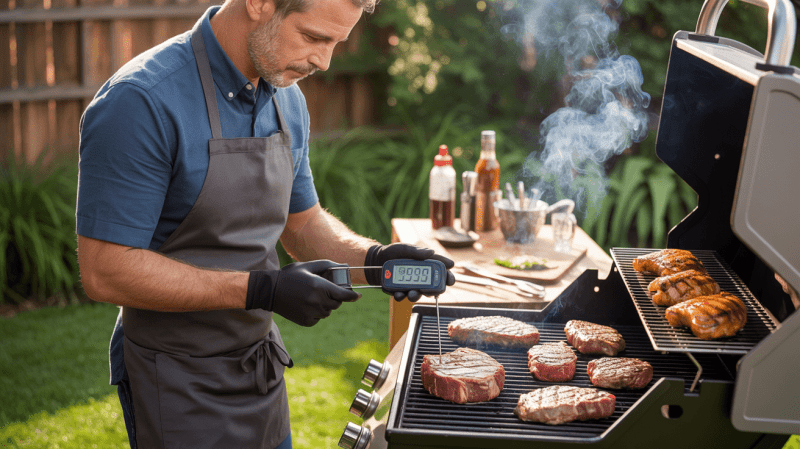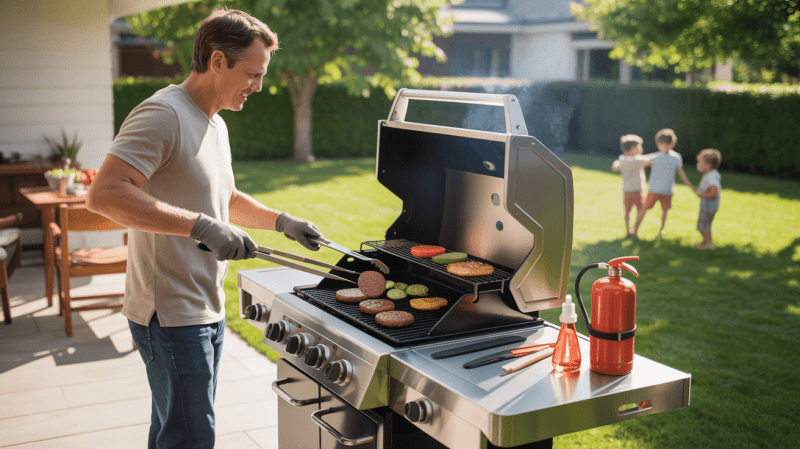Grilling a London broil can be a delicious way to enjoy this flavorful cut of meat. To achieve perfectly grilled London broil, it’s essential to marinate the meat and cook it at the right temperature. This simple yet effective approach brings out the rich flavors, making it a favorite for cookouts and family dinners.

Knowing how to select the right cut and preparing the meat properly can set the stage for a great grilling experience. For those who want the best taste and tenderness, a good marinading process is key. The right grilling techniques will ensure the meat cooks evenly and retains its juices.
Once grilled, knowing how to properly carve and serve the London broil makes all the difference. This article will guide readers through the entire grilling process, ensuring they impress their guests with a tasty meal.
Key Takeaways
- Marinating is crucial for flavor and tenderness in London broil.
- Grilling at the right temperature enhances the cooking process.
- Proper carving techniques help in serving the meat beautifully.
Choosing the Right Cut
Selecting the correct meat cut is crucial for a great London broil. The cut affects flavor, tenderness, and grilling results. Here are key points to consider when choosing.
Top Round and Flank Steak
The most popular cuts for London broil are top round and flank steak.
-
Top Round: This cut comes from the rear leg of the cow. It is known for being lean yet flavorful. When cooked properly, it can be tender and juicy. It is best suited for marinating before grilling.
-
Flank Steak: This comes from the lower abdomen area. It has a rich flavor and a distinct grain. Flank steak is also lean but can be tougher than top round. It should be thinly sliced against the grain after grilling to maximize tenderness.
Both cuts can produce excellent results when grilled correctly.
Identifying Quality Meat
When selecting meat, freshness is key. Look for bright, red color without any brown spots. The meat should feel firm to the touch and not slimy.
-
Fat Content: A small amount of marbling (fat within the meat) can enhance flavor. Avoid cuts with excessive fat, as these can lead to flare-ups when grilling.
-
Butcher's Advice: Consult a butcher for recommendations. They can suggest the best cuts and help choose high-quality options.
Choosing wisely can lead to a more flavorful and enjoyable grilling experience.
Meat Preparation
Preparation is essential for grilling London broil. Here are some important steps:
-
Marinating: A good marinade can make tough cuts tender. Use a mix of acids (like vinegar or citrus juice), oils, and spices. Marinate the meat for at least 4 hours or overnight for the best flavor.
-
Temperature: Let the meat sit at room temperature before grilling. This ensures even cooking.
-
Cutting: When finished cooking, slice the meat against the grain. This technique breaks up the muscle fibers, making each bite more tender.
Proper preparation will enhance the overall grilling experience and flavor.
Marinating the Meat

Marinating enhances the flavor and tenderness of London broil. Choosing the right marinade and knowing how to apply it are crucial for a delicious result.
Selecting a Marinade
A good marinade typically includes an acid, oil, and seasonings. Some popular options are:
- Balsamic Vinegar: Adds a rich, tangy flavor.
- Soy Sauce: Provides saltiness and umami.
- Worcestershire Sauce: Offers a complex flavor profile.
Adding aromatic elements like garlic powder, black pepper, and red pepper flakes can boost taste. Olive oil is important too; it helps to tenderize the meat while keeping it moist. A splash of lemon juice or a teaspoon of mustard can add a nice zing.
Essential Marinating Tips
Proper marinating can make a significant difference. Here are some key tips:
- Score the Meat: Lightly scoring the surface in a diamond pattern allows the marinade to penetrate better.
- Use a Resealable Bag: Placing the meat in a resealable bag minimizes clean-up and ensures even marinade coverage.
- Mix Thoroughly: Combine marinade ingredients well before adding the meat, ensuring all flavors blend.
He or she should let the London broil marinate for optimal flavor.
Time and Temperature
Timing is crucial for marinating. For tougher cuts like London broil, 2 to 24 hours is ideal. A minimum of 2 hours allows some flavor penetration, while longer marinating enhances taste and tenderness.
Keep the marinating meat in the refrigerator to prevent spoilage. The ideal temperature for marinating is below 40°F. If the marinade contains acidic components like vinegar or lemon juice, shorter times are effective. Too long can lead to mushy meat as acids break down proteins.
Monitoring these factors ensures a well-marinated London broil ready for grilling.
Mastering the Grill

Grilling a London broil requires understanding the right techniques and temperatures. Mastering the grill involves knowing how to use direct and indirect heat, the importance of grill temperature and timing, and how to test for doneness accurately.
Direct vs Indirect Heat
When grilling, it is essential to know when to use direct or indirect heat. Direct heat cooks the meat quickly by placing it directly over the flame or heat source. This method is perfect for searing the London broil, creating a flavorful crust. For this cut of meat, grilling over direct heat for a few minutes per side is advisable.
Indirect heat comes into play for thicker cuts or when a slow cook is needed. By moving the meat away from direct flames, it cooks evenly without burning. This is useful for finishing the London broil after initial searing. Using both methods together can enhance flavors and texture.
Grill Temperature and Timing
The grill temperature is critical for achieving the desired doneness. A grill should be preheated to high heat, around 450°F to 500°F, for searing the London broil. This high temperature allows for quick cooking, keeping the meat juicy.
Timing varies based on thickness. Generally, grilling for 4 to 6 minutes per side on direct heat is a good rule of thumb. This will reach a medium-rare to medium doneness. Use a meat thermometer for accuracy. For medium-rare, aim for an internal temperature of 135°F, while 145°F is ideal for medium.
Testing for Doneness
To ensure the London broil is cooked to perfection, testing for doneness is vital. The most reliable way to check is by using a meat thermometer.
Insert the thermometer into the thickest part of the meat. For rare, look for 125°F; for medium, aim for 135°F; medium-well is typically 150°F, and anything above 160°F is well done.
Let the meat rest for about 5 to 10 minutes after cooking. This allows juices to redistribute, enhancing flavor and tenderness. Knowing these temperatures ensures a delicious, perfectly grilled London broil every time.
Carving and Serving

Properly carving and serving a London Broil can enhance the dining experience. The right technique for slicing can keep the meat tender, while thoughtful pairings and sauces can complement its flavor.
The Art of Slicing
When carving a London Broil, technique is key. Start by letting the steak rest for 10 to 15 minutes after grilling. This helps the juices redistribute, ensuring a juicy steak.
Use a sharp knife to slice the meat against the grain. This method breaks up the muscle fibers, making each piece more tender. Aim for slices that are about 1/2 inch thick for the best balance between size and tenderness.
A clean, confident motion is vital. Avoid saw-like motions, as they can make the meat tough. Instead, a long, smooth cut yields better results. Lastly, a sprinkle of salt and pepper can enhance the flavor of the slices when served.
Pairings and Sauces
Selecting the right sides and sauces can elevate the London Broil. Traditional pairings include roasted vegetables, mashed potatoes, or a fresh salad. These sides complement the robust flavor of the steak.
For sauces, consider options like chimichurri or a garlic butter sauce. A sauce made from heavy whipping cream, garlic, and spices can add rich flavor with a creamy texture. For a bit of zest, a "butt kickin' blacken" spice blend can offer a delightful contrast to the meat's richness.
Drizzle sauces over the sliced steak or serve them on the side for dipping. This approach enhances flavor without overwhelming the steak's natural taste.
Frequently Asked Questions

Grilling a London Broil can raise many questions. Here are answers to common queries about temperature, cooking times, and preparation methods to help achieve the best results.
What is the ideal grilling temperature for a London Broil?
The ideal grilling temperature for a London Broil is around 400°F (204°C). This temperature helps to sear the outside while cooking the inside properly. A hot grill gives the meat a nice crust.
How long should a London Broil be cooked on a gas grill to achieve medium rare?
To achieve medium rare, a London Broil should be cooked for about 5-8 minutes on each side. Cooking time may vary based on the thickness of the meat. It should reach an internal temperature of about 130°F (54°C) for medium rare.
What are the steps to grill a London Broil on a charcoal grill?
First, prepare the charcoal grill by setting up two zones: one for direct heat and another for indirect heat. After marinating the meat, place it over the hot part of the grill for searing. Cook each side for approximately 5-8 minutes. Move it to the cooler side to finish cooking, ensuring even doneness.
Can you grill a London Broil wrapped in foil, and what are the benefits?
Yes, a London Broil can be grilled wrapped in foil. This method helps to keep the meat moist and allows for even cooking. It can also infuse flavors from herbs and spices added inside the foil.
How can you tenderize a London Broil before grilling?
Tenderizing a London Broil can be done by using a meat mallet to pound the meat. Another method is to marinate it with acidic ingredients like vinegar or citrus juice, which help break down tough fibers. Both methods improve the texture for better grilling.
Is marinating necessary for grilling London Broil, and what are some recommended marinade recipes?
While marinating is not strictly necessary, it is highly recommended. A good marinade adds flavor and helps tenderize the meat. Some popular marinade ingredients include soy sauce, garlic, olive oil, and herbs. A simple mix of soy sauce, garlic, and Worcestershire sauce works well.
DISCLAIMER
This document is provided for general information purposes only. It should not be relied upon as providing legal advice, technical, or specific operational guidance to the reader, whether as to the practices described in the document or the applicable legal requirements and regulations. Backyard Grilling Pros.com expressly disclaims any responsibility for liability arising from or related to the use or misuse of any information in this document.
